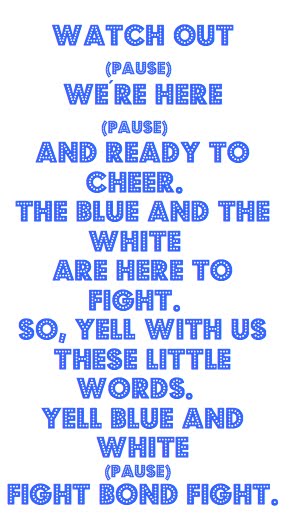Heard it before?
You're welcome.




Cheerleading pyramids are essentially one big train of stunting activity. By creatively combining lifts, poses and dismounts, you end up with a sort of mega stunt that is visually impressive. It’s important that all the squad members are on the same page. So, when you’re teaching cheerleading pyramids to the squad for the first time, it is good to start with the right vocabulary.
A pyramid, can be dissected into several parts:
When you first begin working on a new pyramid, it’s important that you go slowly and take time to make sure everyone knows what they are doing.

 The Cheerleaders are set to perform at:
The Cheerleaders are set to perform at:








